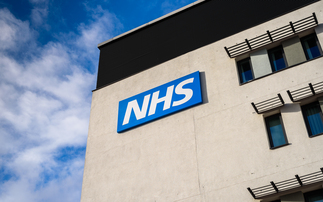Lack of private medical cover growth has spurred insurers to look for cost-efficiencies from hospitals and consultants, Laing and Buisson has reported.
According to the Private Acute Medical Care UK market report, private and voluntary hospitals are seeing record levels of surgical treatment activity as private spending on acute care remains flat.
The report showed 1.64m patients were admitted for surgical treatments in the first half of this year, the equivalent to some 14.5% of total surgical admissions in all NHS and independent UK hospitals.
Laing and Buisson said the activity has been driven by increased NHS admissions given spending on acute medical care by private patients has been flat since 2005.
It added the independent sector faced a challenge to grow its private patient customer base as its NHS surgical activity matured.
Philip Blackburn, report author and consultant at Laing and Buisson, said: "Independent acute medical hospitals are carrying out more activity than ever before, but their funding dynamics confirm a sector that looks to have crucial pinch points coming up.
"Private business from medical cover payouts desperately needs some relief from an improved economy, but it is worrying that medical cover demand has not yet benefited from slippages in NHS performance, which appear to have energised self-pay private spending while public spending has been squeezed."
He added the insurer search for cost-efficiencies from hospitals and consultants was likely to continue in the absence of market growth and/or savings for policyholders.
The report also picked up a subtle trend of provider diversity within the market as insurers explore non-hospital provision for some treatments.
Blackburn said: "While this new research suggest that there are opportunities for private self-pay in the short term, in the longer term performance of the NHS, as its reforms unfold, remains a great unknown."
The report stated that independent hospitals' private patient business has seen good growth in self-pay spending by individuals since 2008 - up 14% overall in real terms in the last three years.
According to Laing and Buisson, it has helped soften a sharp fall in payouts from private medical insurers in 2010 and 2011.
The report added that NHS' private patient business had emerged out of the doldrums with the Coalition's lifting of the cap on private income.
The report highlighted that stronger competition for private patients and efficient delivery of increased, low margin NHS work represented a challenging picture for hospitals.
Laing and Buisson estimated that of the surgical admissions data, 1.2m were treated as daycases and 400,000 on an overnight basis.
Revenues generated by independent acute medical hospitals and clinics were recorded at £4.14bn in 2011, but barely grew in real terms in the last two years; up 0.7% as hospitals' private patient revenues (£3.06bn) fell back by 3% overall in 2010 and 2011.
Income from the NHS has grown strongly to reach a record high of £1.09bn but NHS spending has quadrupled since the mid 2000s; its real growth of 7% and 5.5% in 2010 and 2011 represents a clear slowing.











